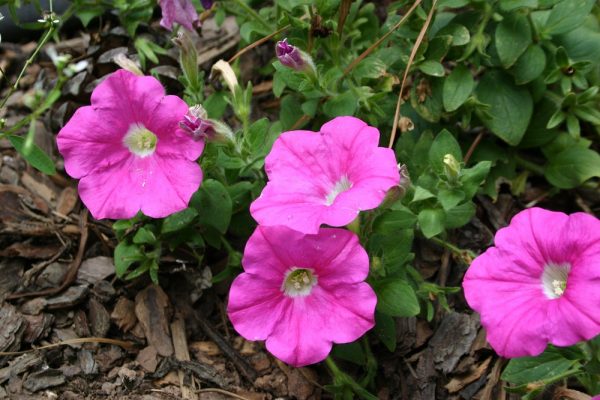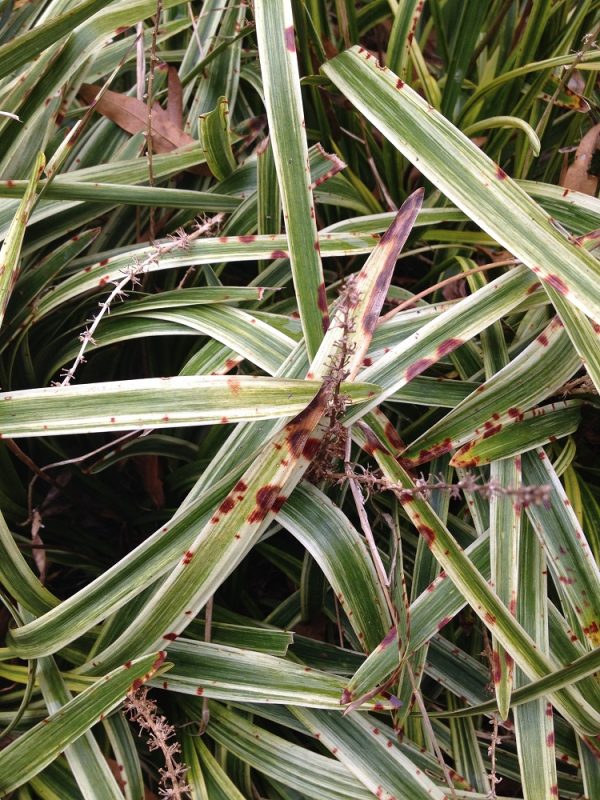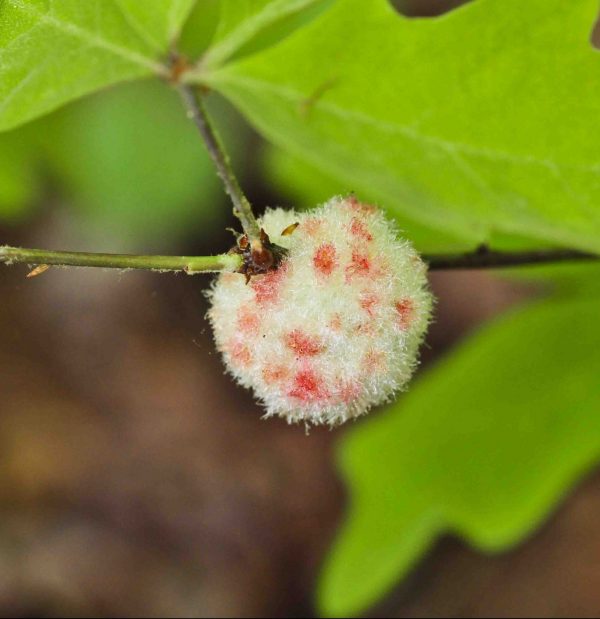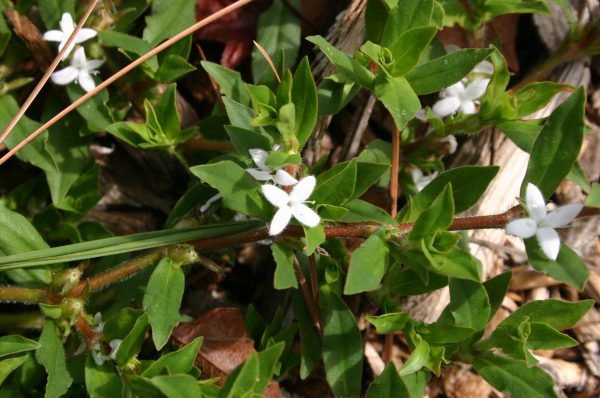Grape, Bunch
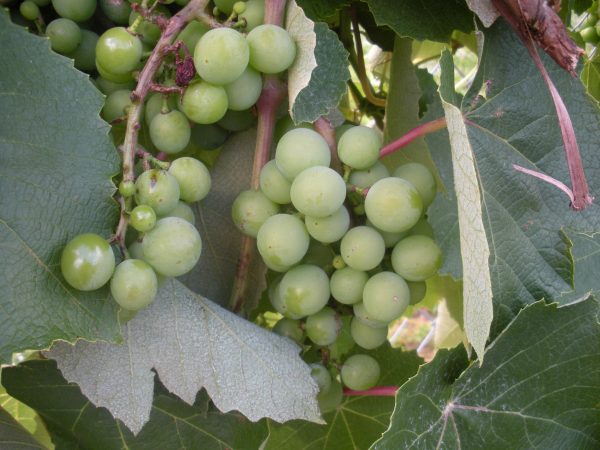
Vitis cv.
American and French hybrid bunch Grapes can be grown in most areas of the Southeast as long as varieties adapted to your area are chosen. They can be grown in the garden as ornamentals or just for the fruit.
Much more information can be found in The Georgia Fruit & Vegetable Book by Walter Reeves and Felder Rushing
See also Home Garden Grapes
Unfortunately, many are grown on arbors suited for decoration and sitting under on a hot afternoon but not suited for managing the Grapes.
WHEN TO PLANT
Plant Grapes in the spring as soon as the soil is dry enough to work. The plants need time to become established before the stresses of summer afflict them.
WHERE TO PLANT
Because Grapes like hot weather, they are some of the latest plants to leaf out in spring. In cooler climates, plant them where they will warm up quickly, such as the south side of a building. Well-drained soil is essential but Grapes do not do well in extremely fertile soils. The plants grown in fertile soils produce lots of leaves and often low-quality Grapes. Poor soils tend to produce moderate crops of Grapes with excellent flavor. Hillsides are particularly good sites for Grapes, promoting air drainage (cooler air drains down the hill). Air drainage reduces the chance of late-season frosts and dries foliage more rapidly, lessening problems with diseases.
HOW TO PLANT
Prepare the soil the year before planting by killing the weeds and tilling the soil. Grapes do not compete well with weeds, so starting clean is a good idea. Before planting, decide on the kind of support system you want. There are at least 3 in common usage but the 4-Cane Kniffin is probably the easiest for a home garden.
Space the plants about 10 feet apart along the support. A typical garden may have room for only 1 row. Set the plants at the same depth they grew in the nursery. Do not fertilize the plants for a month after planting unless they are low in vigor (that is, they have very little growth). Grapes should have a huge amount of growth each year but overly vigorous plants may suffer winter damage.
CARE AND MAINTENANCE
Immediately after planting, prune the plants to a single stem with 2 buds. After new growth starts in spring, select the more vigorous cane, tie it to a stake and remove the other cane. Allow the single cane to grow until it reaches the top wire of the trellis. It will form the permanent trunk of the Grape vine. If side growth occurs near the lower wire, train one shoot along the wire in each direction and remove all nearby sprouts. When the main cane reaches the top wire, or nearly so, pinch out the growing tip to induce branching. Train the resulting two sprouts along the wire in each direction. Select a shorter cane near each of the four arms and prune it back to 2 buds. Remove other sprouts along the trunk. Although it will break your heart to do so, remove flowers or fruit clusters that develop anywhere the second year. This allows energy to be directed toward good root establishment. The third spring, the second year�s laterals will grow long canes and produce fruit. Select 4 new laterals (1 for each arm) and prune them severely, leaving 2 buds on each. These buds will grow into the fruiting canes for the next year.
Once vines are into production, prune them every spring. Select 4 moderately strong laterals from last year, pruning them back and leaving 6 to 10 buds along each; these arms will produce fruit this year. Select 4 smaller laterals, cutting them back to 2 buds each; these are renewal spurs for the laterals the following year. Proper pruning removes about 90 percent of the wood on a vine.
Grape pruning should be done during January and February. Later, spring pruning will result in prodigious amounts of sap �bleeding� from the pruning wounds. Though alarming to the gardener, bleeding does not harm the plant and will stop after a week. Proper pruning reduces the number of problems that Grapes may have with insects and diseases.
For young vines, apply 1/4 cup of 10-10-10 fertilizer around each plant. Repeat at six week intervals until mid-July. On two-year-old vines, double the first year rate and use the same interval. Bearing vines will need 2 1/2 pounds of 10-10-10 per plant applied in March. Magnesium deficiency, characterized by yellowing between the leaf veins on the older leaves, may become noticeable in mid-summer. For young plants, apply two ounces of magnesium sulphate (Epsom salts) around each vine, watering it in afterwards. Apply four to eight ounces per mature, bearing vine. It may require two to three years to bring the magnesium level up for the best plant performance.
PESTS
Grapes can be attacked by insects such as Japanese beetles and aphids. Diseases such as black rot can ruin fruit. Pierce�s disease, which is spread by leafhoppers, can kill a vineyard in three years. Your local Extension office can provide you with a spray schedule for specific pests and diseases.
Fruit – 2020 Homeowner Spray Guide
ADDITIONAL INFORMATION
Grapes mature in late summer to early fall. Full color is not the only indicator of maturity. At maturity the seeds and the cluster stems turn brown and the berries attain maximum sweetness. Harvest them then.
VARIETIES
American bunch Grapes are derived from native American species. They are characterized by their hardiness and insect and disease resistance and are generally well-adapted to Southeast growing conditions.
American-French hybrid Grapes are crosses between European Grapes and native American Grapes. These varieties are considered to be more suitable than American Grapes for wine because they produce a flavor more like European Grapes and lack the �foxiness� unique to American Grapes. (Foxiness is the taste that comes to mind when you think of bottled Grape juice.)
European Grapes (Vitis vinifera) are the primary Grapes grown in the western United States and Europe. European Grapes are difficult to grow in the Southeast and are generally not recommended.
Zone 6a – 7b
American and French Hybrids for Fresh Consumption
Fruit color
Variety
Comments
BLUE
Buffalo
early, good quality for juice and desserts
Fredonia
Mid to late-season, good for juice & pies
Concord
mid-season, ripens unevenly
Sunbelt
ripens more evenly than Concord
WHITE
Niagara
golden fruit
Villard Blanc
green-yellow fruit
Aurora
good for wine & fresh eating
RED
Delaware
small but sweet, good red wine
Alden
large berries, vigorous vine
Catawba
purple-red, uneven ripening
Steuben
good for jelly, fresh eating
BLUE SEEDLESS
Mars
good for fresh eating
Glenora
mid-season ripening; long, loose fruit cluster
WHITE SEEDLESS
Marquis
RED SEEDLESS
Reliance
good for fresh eating
FRENCH HYBRIDS FOR WINE
WHITE
Seyval Blanc
ripens mid-season, good disease resistance
Vignoles
compact clusters, very hardy
Vidal Blanc
ripens late, very productive
Villard Blanc
produces large, loose clusters of fruit
Aurora
large clusters of amber fruit
BLACK
Foch
tight clusters; excellent flavor;
Baco Noir
extremely vigorous, good for clay soils
Villard Noir
Easy to pick, but produces many unripe berries
ZONES 7B – 8B
AMERICAN AND FRENCH HYBRIDS FOR FRESH CONSUMPTION
BLACK
Conquistador
good for wine and fresh eating
WHITE
Orlando Seedless
small, light green berries
Suwanee
very light blue fruit
RED
Daytona
pink fruit, good for hot climates
FRENCH HYBRIDS FOR WINE
WHITE
Blanc du Bois
self-fertile, disease resistant
Lake Emerald
light green fruit, disease resistant
Miss Blanc
developed in Mississippi, resists disease
BLACK
Roucaneuf
can also be used for jelly and fresh eating
Black Spanish
a bit tart but good disease resistance




